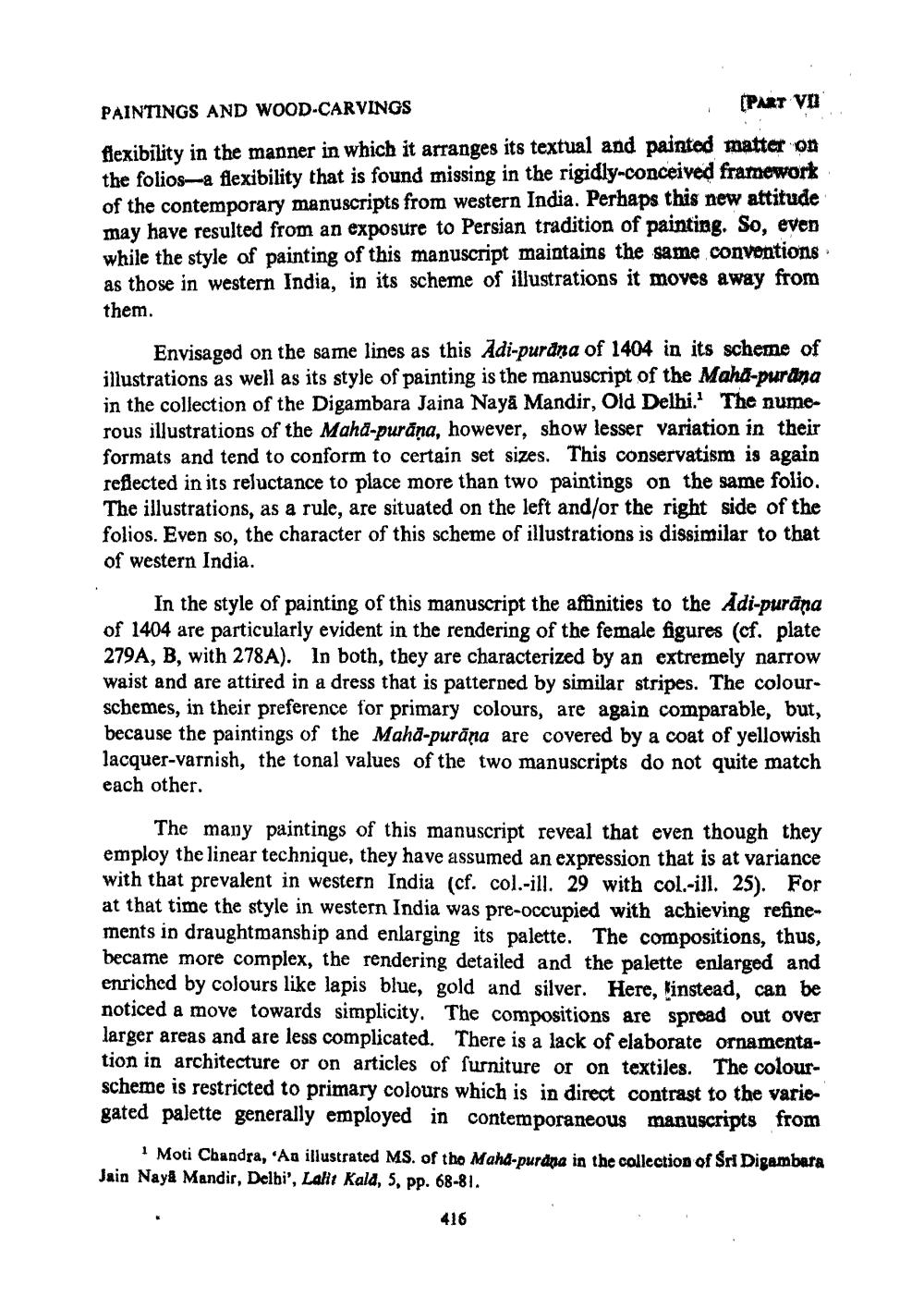________________
PAINTINGS AND WOOD-CARVINGS
; (PART VI flexibility in the manner in which it arranges its textual and painted matter on the folios-a flexibility that is found missing in the rigidly-conceived framework of the contemporary manuscripts from western India. Perhaps this new attitude may have resulted from an exposure to Persian tradition of painting. So, even while the style of painting of this manuscript maintains the same conventions as those in western India, in its scheme of illustrations it moves away from them.
Envisaged on the same lines as this Adi-purana of 1404 in its scheme of illustrations as well as its style of painting is the manuscript of the Maha-purana in the collection of the Digambara Jaina Naya Mandir, Old Delhi. The numerous illustrations of the Maha-purāna, however, show lesser variation in their formats and tend to conform to certain set sizes. This conservatism is again reflected in its reluctance to place more than two paintings on the same folio. The illustrations, as a rule, are situated on the left and/or the right side of the folios. Even so, the character of this scheme of illustrations is dissimilar to that of western India.
In the style of painting of this manuscript the affinities to the Adi-purāna of 1404 are particularly evident in the rendering of the female figures (cf. plate 279A, B, with 278A). In both, they are characterized by an extremely narrow waist and are attired in a dress that is patterned by similar stripes. The colourschemes, in their preference for primary colours, are again comparable, but, because the paintings of the Maha-purāna are covered by a coat of yellowish lacquer-varnish, the tonal values of the two manuscripts do not quite match each other.
The many paintings of this manuscript reveal that even though they employ the linear technique, they have assumed an expression that is at variance with that prevalent in western India (cf. col.-ill. 29 with col.-ill. 25). For at that time the style in western India was pre-occupied with achieving refinements in draughtmanship and enlarging its palette. The compositions, thus, became more complex, the rendering detailed and the palette enlarged and enriched by colours like lapis blue, gold and silver. Here, instead, can be noticed a move towards simplicity. The compositions are spread out over larger areas and are less complicated. There is a lack of elaborate ornamentation in architecture or on articles of furniture or on textiles. The colourscheme is restricted to primary colours which is in direct contrast to the variegated palette generally employed in contemporaneous manuscripts from
Moti Chandra, 'An illustrated MS. of the Mahd-purdna in the collection of Sri Digambara Jain Naya Mandir, Delhi', Lalit Kald, 5, pp. 68-81.
416




